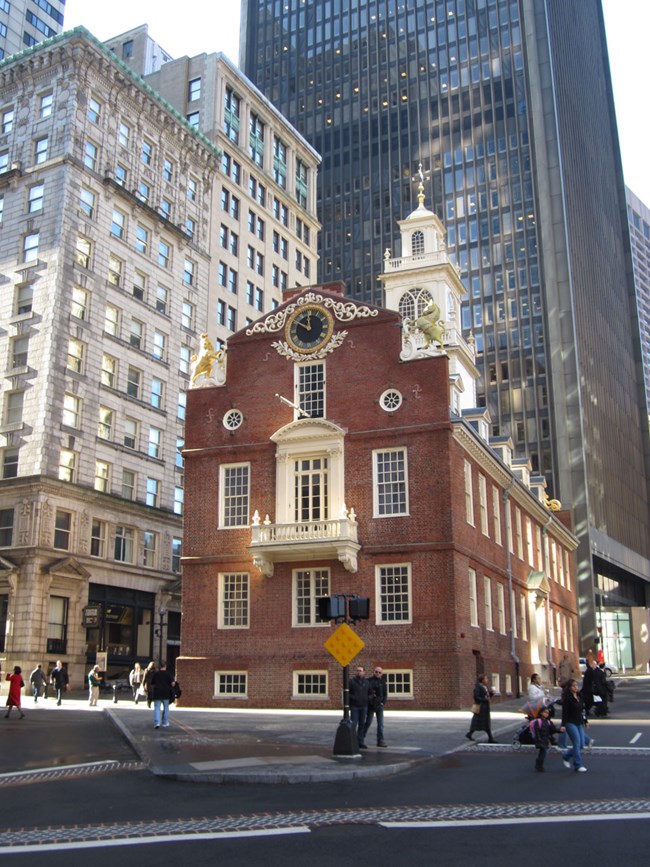

The History of the Old State House
Built in 1713, the “Town House” acted as a merchants’ exchange on the first floor. The second floor served as the seat of colonial and later state government throughout the 1700s. The royal governor, appointed by the King of Great Britain, held his office in the building until 1775, and from the balcony he gave voice to the King 3,000 miles removed from London. The governor’s stature as surrogate for the crown was underscored by his elevated position upon the balcony which overlooked King Street. Upon the right and left of the balcony, a lion and unicorn—royal symbols of the King of Great Britain—graced the main façade facing the public square. From this balcony, Bostonians listened to royal proclamations, but here they also heard for the first time the Declaration of Independence, which announced the birth of a new nation.
In another chamber sat the highest court of the colony. In 1761, James Otis opposed the Writs of Assistance before the court, arguing that the writs violated the constitutional liberties of Englishmen. Though he lost the case, it left a lasting impression on a young lawyer named John Adams who attended the proceedings. Later Adams later wrote that “then and there the child independence was born.”1
Both Otis and Adams, as well as Adams’ cousin Samuel and merchant John Hancock, served as representatives in the Massachusetts provincial legislature. Samuel Adams and James Otis proved to be among some of the most notorious members, arguing for measures which increasingly created friction with the royal governor and his supporters. In 1768, one such measure—the “Massachusetts Circular Letter”—was sent to all British Colonies and to London.2 It argued the unconstitutionality of the Townshend Acts, and the reaction across the Atlantic prompted a dramatic closure of the legislature for the remainder of the year.
The Boston Massacre
A cobblestone circle beneath the Old State House balcony marks the site of the 1770 Boston Massacre. The incident began with local boys taunting a British sentry on a cold March night. When the sentry struck one of the boys, the situation quickly escalated. Mobs of laborers, sailors, and others of “the lower sort” joined into the confrontation. Some armed themselves with sticks and clubs. Others merely observed the incident as bystanders. A detachment of seven soldiers under command of a Captain eventually emerged on the scene to rescue the beleaguered sentry. When they crossed the square to reach him, the crowd formed around them and the captain had the men draw into a small perimeter, muskets loaded.
In the cacophony of taunts, screams, and church bells ringing, one of the soldiers was struck. Confusion and fear overwhelmed the sentry. He recovered, took aim, and fired. Most of the other soldiers opened fired in response, thinking an order had been given. The captain never gave an order, but as the balls flew through the street, men fell dead and wounded. The first bloodshed of the Revolution fell on to the ice and snow in front of the Old State House.
- “From John Adams to William Tudor, Sr., 29 March 1817,” Founders Online, National Archives,https://founders.archives.gov/documents/Adams/99-02-02-6735.
- To read “A Circulatory Letter, directed to the Speakers of the respective Houses of Representatives and Burgesses on this Continent … February 11, 1768,” please visit the Massachusetts Historical Society website.
